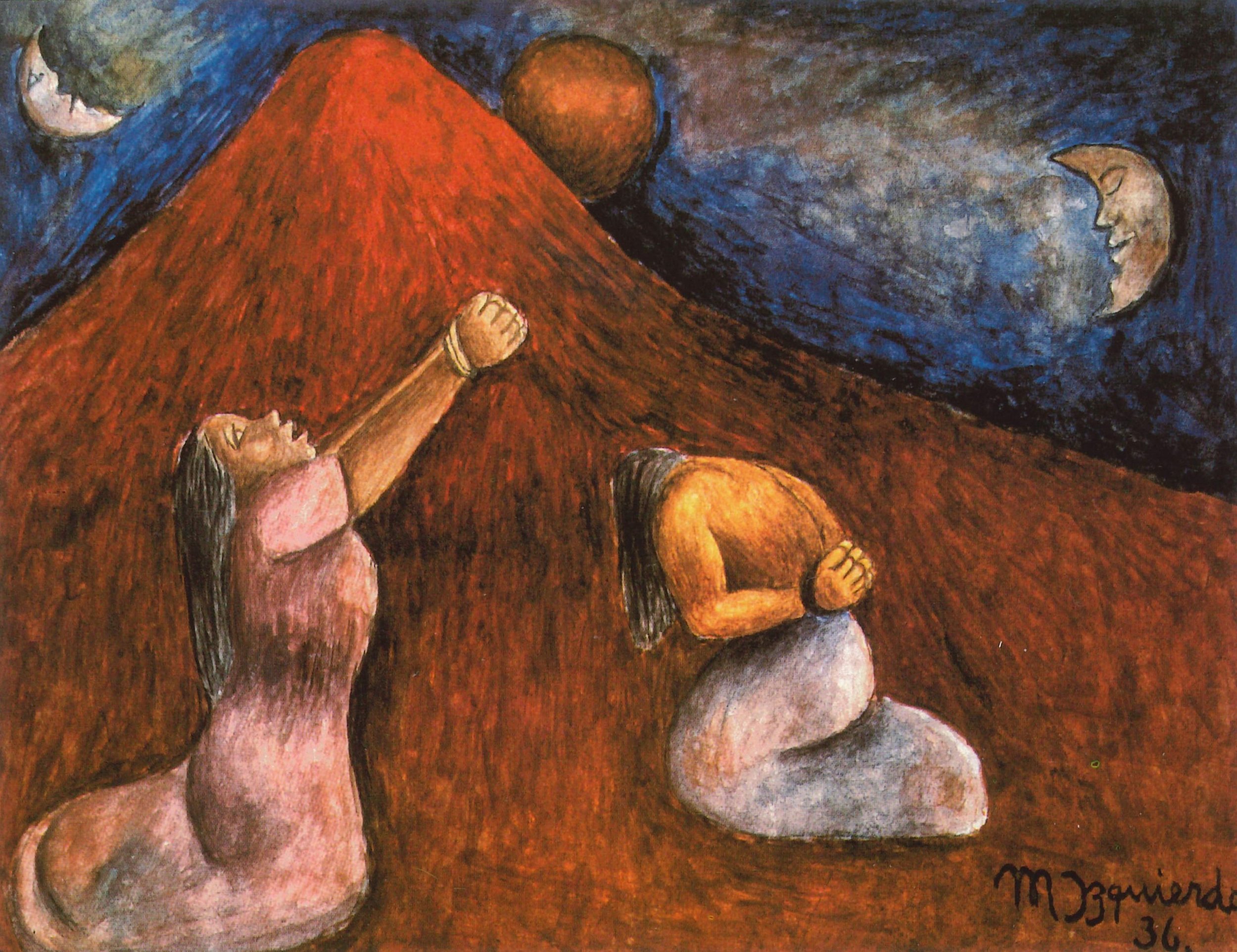
Slaves in a Mythical Landscape
Author: María Izquierdo
Name: Slaves in a Mythical Landscape (Esclavas en paisaje mítico)
Date: 1936
Material: Watercolor and tempera on paper
Dimensions: 8.1 x 10.6 inches
Location: Private collection
In Slaves in a Mythical Landscape (Esclavas en paisaje mítico, 1936), María Izquierdo constructs a haunting allegory of captivity, fate, and resilience, embedding surreal symbolism within a desolate, metaphysical setting. Two bound women kneel before an imposing red mountain, their hands tied as they confront an overwhelming celestial presence. One woman lifts her arms in a gesture that oscillates between prayer and despair, while the other bows her head in resignation, reinforcing the painting’s atmosphere of subjugation. The barren, otherworldly terrain surrounding them transforms their suffering into a universal meditation on oppression, particularly the constraints placed on women within both social and spiritual realms. Above the red mountain, a celestial realm unfolds—a sky populated by fragmented moons and a glowing red orb that looms over the women like an ominous cosmic force.
The presence of these planetary bodies reflects Izquierdo’s engagement with Theosophy and the ideas of Peter Ouspensky about the “fourth dimension”. Izquierdo developed a symbolic visual language that situated female figures within landscapes governed by metaphysical laws. In Slaves in a Mythical Landscape, celestial elements do not simply provide atmosphere; they signify the overarching, unseen energies that dictate human existence, suggesting that the women's condition is inscribed within a cosmic order as much as a social one.
This painting is part of a larger thematic cycle that includes Allegory of Labor (Alegoría del trabajo, 1936) and Allegory of Liberty (Alegoría de la libertad, 1937), all of which explore the subjugation of women through allegorical compositions steeped in mysticism. In each, Izquierdo’s female protagonists appear trapped within vast, almost supernatural landscapes, their bodies at the mercy of larger, elemental forces. Like Allegory of Labor, where a male figure descends from the sky connected to a golden sphere, Slaves in a Mythical Landscape places women in a dreamlike yet oppressive world where celestial bodies dictate their fates. The recurring use of moons, barren landscapes, and bound figures underscores Izquierdo’s vision of a reality shaped not only by earthly constraints but also by an unseen cosmic will.